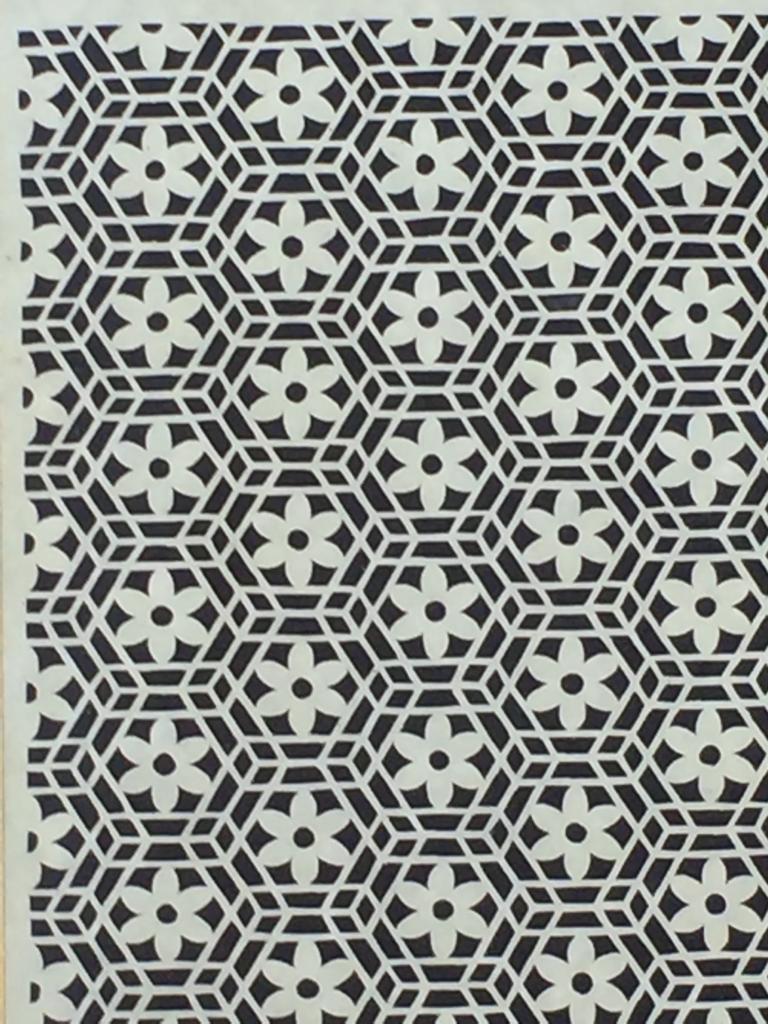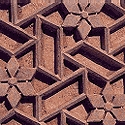Sanjhi- the hand-cutting of paper for ritualistic and ceremonial rangolis – is commonly understood in its contemporary form as a ritualistic craft used in temples, and sometimes homes, for the worship of Lord Krishna. It is believed to have originated, according to the thesis forwarded by Asimakrishna Dasa, in his book Evening Blossoms: The Temple Tradition of Sanjhi in Vrindavana, as ‘a ritual worship undertaken by unmarried girls all over northern India to obtain a suitable husband’. Thus, while the temple craft is practised only by male priests and their male apprentices, the folk aspect of the craft was, and is, practised chiefly by unmarried girls.
This craft, which involves the cutting of an intricate stencil depicting scenes from the life of Lord Krishna and the use of this paper stencil in creating a rangoli or floor decoration, became a temple tradition (according to Dasa) in the 17th century, ‘when the devotional bhakti movement linked it to games played by Radha and the Hindu god, Krishna. While the ritual of sanjhi, in its devotional and decorative aspects, continues in villages and homes in north India, the temple tradition seems to have become confined to three important temples at Vrindavana and a single temple at Barsana, Radha’s village.
It is important to remember that all sanjhis, whether a part of the folk tradition or of the temple tradition, are made to be worshipped. According to Dasa: “At the time of worship they are transformed from works of art fashioned by human beings into a divine being, Goddess Sanjhi… the transformation from design to goddess comes about naturally with the offering of food bhoga followed by ritual worship aarti performed with burning wick and an offering of water.'” This explains the fact that effacing each sanjhi the next day and painstakingly beginning to create another one is seen not as tedium but a labour of love, ‘to please Lord Krsna’
Presently the art of using the sanjhi is practiced mainly in the temples and homes in Vrindavana in Uttar Pradesh and it is used to depict the different episodes in Lord Krishna’s life; these episodes are linked to festivals in the Vraja calendar. The most important of these festivals is the vrajayatra, a period of 45 days in September and October when pilgrims from all over India visit the sites associated with the life of Lord Krishna. During this period sanjhis are used to decorate specific locations and places along the parikrama. The episodes in Lord Krishna’s life that are depicted through sanjhis change every day, with appropriate themes adorning specific locations. For instance, at Govardhan the traditional sanjhi is one that will depict Lord Krishna lifting the mountain with his finger. At Barsana, the sanjhi depicts Lord Krishna playing Holi with Radha and the gopis. When the sanjhi is unveiled in time for the evening prayers it is worshipped to the accompaniment of songs narrating stories about Lord Krishna’s life. The sanjhi is effaced in the morning and a new characterisation is then made. At the end of the pitr-paksha, a fortnight when Hindus perform rites for and offer prayers to deceased ancestors – when sanjhis are ceremonial – the materials used are then disposed off in the river Yamuna.
YOUR VIEWS
PRACTITIONERS: INDIA
Access 70,000+ practitioners in 2500+ crafts across India.
BIBLIOGRAPHY
10,000+ listings on arts, crafts, design, heritage, culture etc.
GLOSSARY
Rich and often unfamiliar vocabulary of crafts and textiles.
SHOP at India InCH
Needs to be written.






